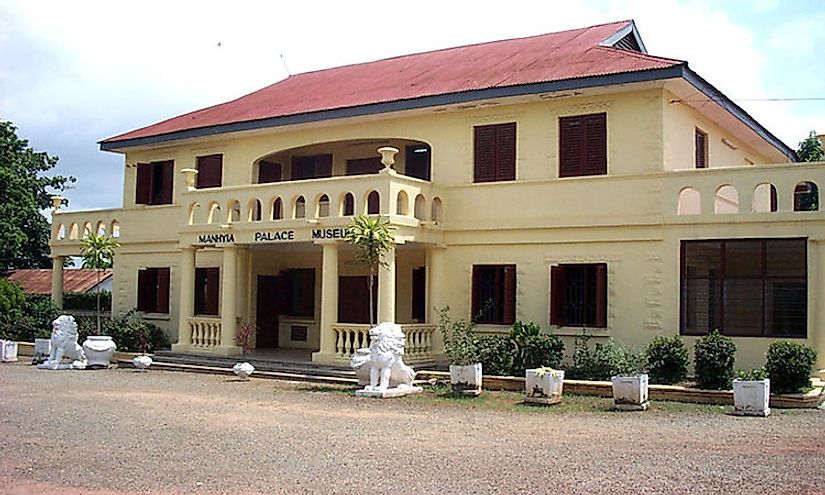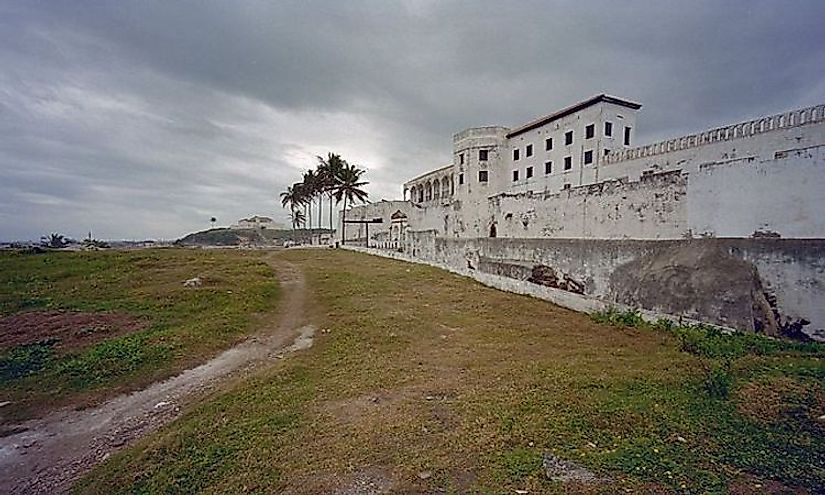Asante Kingdom Sites Of Ghana

UNESCO inscribed these traditional Asante buildings near Kumasi as a cultural World Heritage Site in 1980. Parallel to Ghana’s growing economy is the construction of buildings using modern and western architectural influences. In an urbanization context, the traditional structures of the Asante Kingdom serve as witnesses to Ghana’s architectural heritage. The buildings were built with locally available materials, namely clay, wood, and straws and embellished with gorgeous and unique decorations.
5. Description and History -
Kumasi served as the capital of the prosperous Ashanti empire, which at its zenith in the 18th century, was one of the most wealthy and powerful empires in Africa. The empire’s decline commenced with the arrival of the British in 1806 when most of the kingdom’s buildings were destroyed. 13 buildings, however, have remained that were built in medieval Asante architecture and attesting to the Asante culture. The earthen buildings are designated as traditional shrines and are decorated with geometrical designs and Adinkra symbols. The symbols represent the excellent use of non-verbal communication by the Asante people.
4. Tourism, Research, and Education -
The buildings are of particular significance to researchers, being the last surviving remnants of the Asante Kingdom. The medieval buildings give insight to the Asante’s spirituality, culture, architecture and way of life. The sites are important educational centers for the conservation of immovable African heritage. As time goes by, the number of experts at conserving traditional buildings is rapidly declining. The Asante buildings are crucial in educating a new breed of African conservationists. The sites attract tourists, students, researchers, and African heritage enthusiasts throughout the year.
3. Architectural and Cultural Uniqueness -

The traditional buildings were arranged around courtyards and were built with wood, mud plaster, bamboo, and had thatched roofs. The buildings’ construction began with a timber framework which was filled with clay and thatched with a steep roof. The lower walls were painted red/orange while the upper walls were whitewashed. Notable is the elaborate mural decorations on the buildings. The lower walls have decorative bas-reliefs embellished with various motifs using red clay while the upper walls are laced with intricate geometrical designs. The abstract images are symbolic in meaning and mostly depict animals and plants as symbols. The buildings complete with their rich color and exhibiting a high level of skill and diversity in their decorations are one of their kinds, and preserve the last examples of the Asante architecture.
2. Natural Surroundings, Sights, and Sounds -
Surrounding the buildings are numerous villages, some of which excel in traditional craft and dye making. The current appearance of the architectural designs and the buildings are still authentic reflecting the traditional materials and forms, although most parts have been reconstructed. Out of the 13 buildings 12 have had their original steeply thatched roofs have been replaced with a lighter, corrugated iron, and shallower-pitched roofs. All the buildings have had a replacement of the floor with durable floor from the traditional rammed earth
1. Threats and Conservation Efforts -
The original thatched roofs were replaced with corrugated roofs in the 20th century, affecting the sites’ integrity. The materials used to construct the buildings have made them susceptible to weather and other natural conditions. The traditional materials used in their construction such as particular wood species, bamboo, and thatch have been difficult to acquire due to the intensification of agricultural activities. The sites’ reconstruction has thus been challenging. There is also a shortage of people equipped with the traditional architectural know-how. The increasing popularity of Christianity and Islam has led to their neglect, as they are shrines significant in the traditional religion. Maintenance of the properties is by the Ghana Museums and Monuments Board (GMMB) in collaboration with the Chief and village elders.











